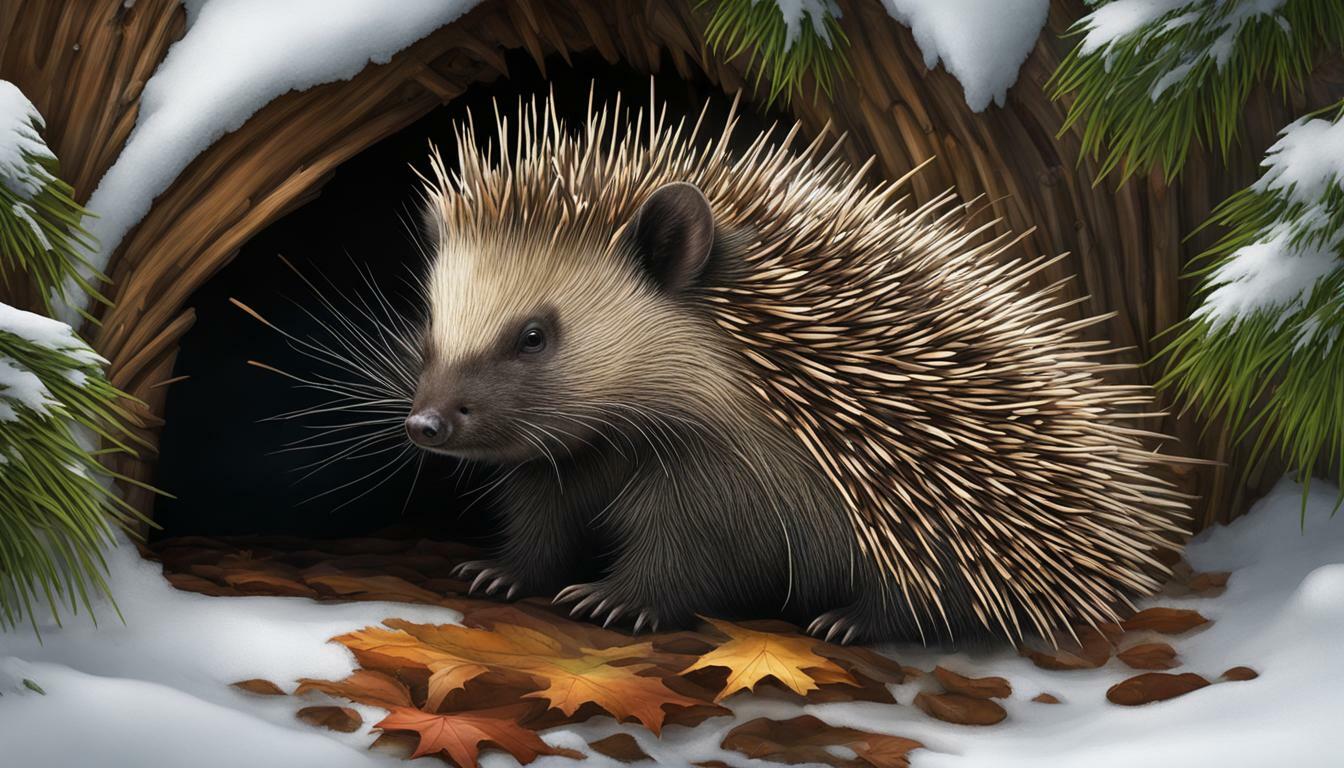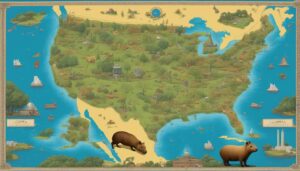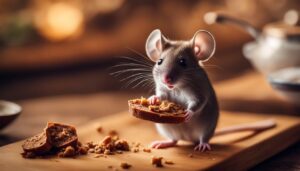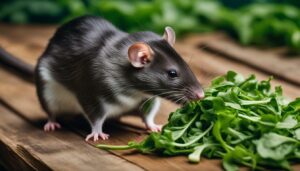Have you ever wondered if porcupines hibernate during the winter season? Contrary to popular belief, porcupines do not hibernate in winter. They remain active and continue to forage for food, albeit with some behavioral adaptations to cope with the cold weather and scarcity of resources.
Key Takeaways:
- Porcupines do not hibernate in the winter.
- They remain active and continue to forage for food.
- Porcupines rely on their quills and dense guard hairs for insulation.
- In winter, when leaves are scarce, porcupines eat tree bark.
- They store fat to sustain themselves through leaner months.
Porcupine Winter Behavior
Despite the chilly temperatures, porcupines exhibit interesting behaviors during the winter months. Unlike many other animals, porcupines do not hibernate in winter. Instead, they remain active and continue to forage for food, albeit on a smaller scale compared to warmer months. This means that porcupines do not undergo a period of deep sleep or metabolic slowdown during the winter.
During the colder months, porcupines rely on their natural adaptations to cope with the cold weather. Their quills and dense guard hairs provide insulation and protect them from the harsh elements. These specialized features enable porcupines to stay warm and regulate their body temperature effectively. While active, porcupines may alter their foraging habits due to limited food availability. With fewer leaves on trees, they turn to consuming tree bark as a source of sustenance.
Porcupines have specific denning habits in winter. They seek out rock crevices and caves, which provide shelter from the snow and cold winds. A unique behavior of porcupines is their habit of placing droppings at the entrance of their den. This territorial marking helps deter other animals from moving into their den and potentially becoming a threat.
Interactions with humans can occur during the winter season as well. Porcupines may venture into residential areas in search of salt. These curious creatures can cause damage to trees, vegetable gardens, and property while seeking this mineral that they crave but cannot obtain from their diet.
| Porcupine Behavior | Description |
|---|---|
| Remain active | Porcupines do not hibernate and stay active during the winter months. |
| Foraging | Porcupines adapt their foraging habits and eat tree bark when leaves are scarce. |
| Denning | Porcupines seek rock crevices and caves for winter shelter and mark their territory by placing droppings at den entrances. |
| Interactions with Humans | Porcupines may venture into residential areas in search of salt, causing potential damage to trees, gardens, and property. |
Survival Tactics and Adaptations
Porcupines have developed remarkable survival tactics and adaptations to thrive in the winter. Unlike many other animals that hibernate, porcupines remain active and continue to forage for food during the colder months. However, their foraging territory becomes smaller, as they stay closer to their dens to conserve energy.
One of the most distinctive adaptations of porcupines is their quills. These sharp, barbed spines provide excellent protection against predators. When threatened, porcupines raise their quills, making it difficult for predators to attack. In addition to their quills, porcupines also have dense guard hairs that help insulate them from the cold temperatures.
In winter, when leaves are scarce, porcupines modify their diet and turn to tree bark as a food source. This adaptation allows them to sustain themselves through the leaner months. They also store fat reserves, which they rely on for energy during times when food is scarce.
Porcupines have the same den each winter and strategically place their droppings at the entrance. This serves as a deterrent to other animals, signaling that the den is already occupied. By maintaining their den and protecting it from intruders, porcupines ensure a safe and secure shelter during the winter months.
| Survival Tactics and Adaptations |
|---|
| Active foraging and smaller territory in winter |
| Protective quills and dense guard hairs |
| Adaptation to tree bark as a food source |
| Storage of fat reserves for energy |
| Strategic denning with droppings at entrance |
Porcupines can sometimes venture into residential areas in search of salt. Although they crave salt, it is not a part of their natural diet. This can lead to damage to trees, vegetable gardens, and property. To prevent these encounters, it is important to take measures to deter porcupines from visiting residential areas, such as removing potential food sources and securing garbage cans.
In the winter, porcupines become vulnerable to predators, particularly fishers. When snow is deep and prey such as snowshoe hare is harder to capture, fishers may target porcupines. This highlights the importance of porcupines seeking out secure denning sites, such as rock crevices and caves, to minimize their exposure to predators.
Porcupines in Alaska
Research has shown that porcupines in Alaska have unique behavior compared to porcupines in other regions. In Alaska, porcupines do not hibernate but survive the winter by burning body fat and conserving energy. They have larger home ranges in winter and spend most of their time in and around white spruce trees, which provide both feeding opportunities and shelter from the snow.
Porcupines in Alaska also have a remarkable adaptation to their diet. In the winter, they consume a highly toxic diet of spruce needles and bark. While this diet may seem unusual, it provides the necessary nutrients for survival in the harsh Alaskan winters. However, processing this toxic diet requires a significant amount of energy, which is why porcupines in Alaska burn body fat to sustain themselves during the winter months.
It is important to note that after the winter, porcupines rely on the springtime greenery to replenish their fat reserves. This allows them to recover from the energy expenditure and maintain their health as they continue their survival journey through the changing seasons.
Foraging in Winter
During winter, porcupines adjust their foraging habits to find sustenance in a limited food supply. With leaves scarce, these resilient creatures turn to tree bark as their primary source of nutrition. Bark provides essential nutrients and helps them survive the colder months when other food options are scarce.
Porcupines have a preference for trees like hemlock, which not only provide a food source but also serve as shelter against harsh winter weather. These trees offer them protection from snowfall and the biting winds, allowing them to conserve energy and stay warm.
While foraging, porcupines use their sharp incisors to peel away the outer layers of bark, exposing the inner cambium layer that contains vital nutrients. This adaptation allows them to access the nourishment they need from the trees without causing significant harm to the overall health of the tree.
| Porcupine Winter Foraging Characteristics | Details |
|---|---|
| Primary Food Source | Tree bark |
| Preferred Tree Species | Hemlock |
| Foraging Strategy | Peeling away outer bark layers to access cambium |
Porcupines rely on their ability to consume tree bark effectively during the winter, as it sustains them until spring arrives with its abundance of fresh greenery. This adaptation allows porcupines to survive periods of food scarcity and maintain their energy reserves throughout the winter.
Denning Habits
Porcupines have specific denning habits that provide them with warmth and protection during winter. These solitary creatures seek out rock crevices and caves as their preferred denning locations. These natural shelters offer insulation from the cold temperatures and protection from predators.
When selecting a den, porcupines exhibit a preference for rocky areas that provide secure and secluded spaces. The rock formations not only offer a safe refuge, but they also help to create a microclimate that helps regulate the porcupine’s body temperature. Additionally, the dens are strategically chosen to minimize exposure to wind and precipitation.
Porcupines are meticulous about maintaining their dens, ensuring that they remain clean and free from unwanted intruders. They mark the entrance of their dens with their droppings, which serve as a deterrent to other animals. By doing so, they effectively communicate their territorial boundaries and discourage potential competitors from moving in.
Throughout the winter, porcupines rely on their dens for warmth and shelter, spending the majority of their time in these protected spaces. However, they do venture out to forage for food, often returning to their dens to rest and conserve energy. Their denning habits play a crucial role in their survival during the harsh winter months.
Porcupine Denning Habits Table
| Denning Habits | Description |
|---|---|
| Preferred Den Locations | Rock crevices and caves |
| Benefits of Denning | Warmth, protection from predators, insulation from cold |
| Maintenance of Dens | Marking entrance with droppings, deter other animals |
| Den Usage | Spending most time in dens, venturing out for food |
Interactions with Humans
Porcupines occasionally encroach into residential areas during winter, leading to potential conflicts with humans. These fascinating creatures, known for their quills and unique appearance, may seek out urban and suburban environments in search of additional food sources and salt. While their presence can be exciting for some, it can also result in damage to trees, vegetable gardens, and property.
Porcupines are known to have a strong craving for salt, which they cannot obtain from their regular diet. This drives them to explore areas where salt is more readily available, often leading them into residential areas. Unfortunately, their quest for salt can result in porcupine damage as they gnaw on wooden structures, including decks, sheds, and siding. They can also strip the bark off trees, causing harm to their health and potentially killing them.
Homeowners who encounter porcupines in their yards may need to take preventive measures to protect their property. Installing fencing around trees and vulnerable areas can help deter porcupines from causing damage. It’s important to remember that porcupines are protected wildlife in many areas, so it’s essential to consult local regulations before taking any actions.
| Potential Porcupine Damage | Preventive Measures |
|---|---|
| Tree bark stripped off | Wrap tree trunks with protective barriers |
| Garden vegetables eaten | Install fencing around vegetable patches |
| Wooden structures gnawed on | Apply taste deterrents or cover vulnerable areas |
It’s crucial to remember that porcupines are generally peaceful creatures and will not attack unless threatened. If encountering a porcupine, it is advisable to give them space and allow them to move on naturally. Attempting to remove or handle a porcupine can result in injury from their quills.
Predators and Prey
Porcupines face predators during winter, with fishers being a significant threat in certain regions. Fishers are agile predators known for their ability to hunt and kill porcupines, despite the porcupine’s formidable defense mechanism of sharp quills. This predation occurs more frequently when snow is deep, and other prey, such as the snowshoe hare, is harder to capture.
Porcupines have evolved certain adaptations to defend themselves against predators. When threatened, they raise their quills, creating a prickly barrier that deters many potential attackers. However, fishers have developed specialized techniques to overcome this defense. They will often attack porcupines by biting their faces or targeting vulnerable areas where quills are less dense.
While fishers are the primary predators of porcupines, other carnivores such as bobcats and coyotes may also attempt to prey on them, albeit with less success due to the porcupine’s formidable defense strategy. In addition to these predators, porcupines also serve as important prey for various raptors, including great horned owls and golden eagles.
Fishers and Porcupines: A Deadly Encounter
The interaction between fishers and porcupines during winter showcases the intricate dynamics of predator and prey relationships in nature. Fishers, driven by the need to find food in challenging conditions, must employ strategic tactics to prey upon porcupines. This often involves targeting vulnerable body parts and avoiding or minimizing contact with the porcupine’s quills. Meanwhile, porcupines strive to evade these skilled hunters, relying on their quills and the safety of their denning spots to increase their chances of survival.
| Predators | Prey |
|---|---|
| Fishers | Porcupines |
| Bobcats | |
| Coyotes | |
| Great horned owls | |
| Golden eagles |
Porcupines in Alaska
In Alaska, porcupines exhibit different winter behavior, defying the typical hibernation pattern. While porcupines in other regions hibernate during the winter months, those in Alaska remain active throughout the season. Instead of slowing down and conserving energy, they adapt to survive the harsh conditions.
Porcupines in Alaska have larger home ranges in winter and spend most of their time in and around white spruce trees. These trees provide not only shelter from the snow but also a crucial food source. In the winter, porcupines rely on a highly toxic diet of spruce needles and bark. Although it may seem counterintuitive to consume a toxic diet, these porcupines have developed the physiological ability to process and detoxify the compounds found in spruce trees.
Surviving the winter in Alaska requires a great deal of energy for porcupines. As they cannot hibernate and conserve energy like their counterparts in other regions, they rely on burning body fat for sustenance. With limited food options available, porcupines must carefully manage their energy expenditure. They move very little, conserving energy whenever possible.
| Porcupines in Alaska | Porcupines in Other Regions |
|---|---|
| Maintain active behavior throughout winter | Hibernate during the winter months |
| Reliance on white spruce trees for shelter and food | Dependence on various tree species for shelter and food |
| Consume a highly toxic diet of spruce needles and bark | Forage for a wider variety of food sources |
| Burn body fat for energy | Enter a state of reduced physiological activity |
After enduring the winter, porcupines in Alaska depend on the arrival of springtime greenery to replenish their fat reserves. The fresh vegetation provides essential nutrients and helps restore their energy levels after a season of survival. This unique winter behavior allows the porcupines in Alaska to thrive in the extreme conditions of the Last Frontier.
Energy Expenditure and Fat Reserves
Porcupines rely on energy-intensive processes to obtain sustenance from their winter diet. As the availability of fresh foliage diminishes during the colder months, these resilient creatures adapt by consuming a highly toxic diet consisting of spruce needles and bark. This diet is not only challenging to process, but it also requires a significant amount of energy. Porcupines burn body fat to meet this increased energy demand, enabling them to survive throughout the winter.
Research has shown that porcupines’ fat reserves play a crucial role in their winter survival. By storing fat during times of food abundance, they create a reserve that sustains them during periods of scarcity. The stored fat provides a vital energy source as they navigate the challenges of their winter diet and the cold weather conditions. It allows them to maintain their body temperature and carry out essential functions while food sources are limited.
During winter, porcupines conserve energy by minimizing movement and activity. By moving less, they reduce their energy expenditure and preserve their fat reserves. This energy-saving strategy helps them survive for extended periods without the need for constant foraging. While porcupines may not be as active as during other seasons, their ability to efficiently utilize their fat reserves ensures their survival until spring, when fresh foliage replenishes their energy stores.
| Key Points: |
|---|
| Porcupines rely on energy-intensive processes to obtain sustenance from their winter diet. |
| They consume a highly toxic diet of spruce needles and bark during winter. |
| Burning body fat helps porcupines meet the increased energy demand of their winter diet. |
| By minimizing movement and conserving energy, porcupines preserve their fat reserves throughout the winter. |
Conclusion
Porcupines, despite not hibernating, demonstrate remarkable resilience and strategies to survive the winter season. They remain active throughout the winter months, foraging for food and adapting to the cold weather conditions. Porcupines rely on their quills and dense guard hairs, which provide insulation and protection from the harsh elements.
During the winter, when leaves are scarce, porcupines modify their foraging habits and consume tree bark to sustain themselves. They also store fat to provide energy during leaner months. It’s fascinating to note that porcupines have the same den each winter and place their droppings at the entrance to deter other animals from intruding.
As temperatures drop, porcupines may venture into residential areas in search of salt, which they crave but cannot obtain from their diet. This can lead to damage to trees, vegetable gardens, and property. However, porcupines themselves face predation, particularly from fishers. In winter, when snow is deep and other prey is scarce, porcupines can become vulnerable.
Research has shown that porcupines in Alaska have unique winter behavior, as they do not hibernate. Instead, they survive the harsh conditions by burning body fat and moving very little. They have larger home ranges in winter and seek out white spruce trees for both feeding and shelter from the snow.
In conclusion, porcupines possess remarkable adaptations and survival strategies to endure the winter season. Their ability to remain active, adapt their foraging habits, and rely on insulating features like quills and dense guard hairs showcase their remarkable resilience in the face of cold temperatures. Porcupines truly exemplify nature’s ability to overcome challenges and thrive in diverse environments.
FAQ
Do porcupines hibernate in the winter?
No, porcupines do not hibernate in the winter. They remain active and forage for food.
What do porcupines eat in the winter?
In winter, when leaves are scarce, porcupines eat tree bark. They also store fat to sustain themselves through leaner months.
Where do porcupines den in the winter?
Porcupines seek out rock crevices and caves for denning in winter. They rely on hemlock trees for feeding as well as shelter from the snow.
Can porcupines cause damage to property?
Yes, porcupines can venture into residential areas in search of salt, which they crave but cannot get from their diet. They may cause damage to trees, vegetable gardens, and property.
What are the predators of porcupines in winter?
Fishers are known to prey upon porcupines, especially when snow is deep and other prey is harder to capture.
Do porcupines hibernate in Alaska?
Research has shown that porcupines in Alaska do not hibernate but survive the winter by burning body fat and moving very little.
What do porcupines eat in Alaska?
In Alaska, porcupines eat a highly toxic diet of spruce needles and bark, which requires a lot of energy to process.
How do porcupines replenish their fat reserves after winter?
Porcupines depend on springtime greenery to replenish their fat reserves after the winter.




